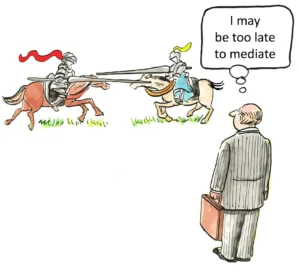What kinds of evidence are required to support a claim of arbitrary and capricious behavior?
Establishing a claim of arbitrary and capricious behavior requires specific types of evidence that demonstrate an agency’s decision lacks a rational basis or represents a clear error in judgment. The arbitrary and capricious standard serves as a fundamental check on administrative power, ensuring that government agencies make decisions based on reasoned analysis rather than whim or caprice. Understanding the evidence necessary to support such claims is essential for attorneys, regulated entities, and individuals seeking to challenge agency actions through judicial review. This article examines the various forms of evidence courts consider when evaluating whether an agency’s decision meets the threshold of being arbitrary and capricious.
The arbitrary and capricious standard derives from the Administrative Procedure Act (APA), which authorizes courts to set aside agency actions found to be “arbitrary, capricious, an abuse of discretion, or otherwise not in accordance with law.” This standard applies broadly across administrative law cases and requires a showing that the agency’s decision-making process was fundamentally flawed. While the standard is deferential to agency expertise, it nonetheless demands that agencies engage in reasoned decision-making and provide rational explanations for their actions. The evidence required to overcome this deference varies depending on the specific circumstances of each case but generally falls into several distinct categories.
The Administrative Record as Primary Evidence
The administrative record constitutes the most critical evidence in arbitrary and capricious claims. This comprehensive collection of documents includes all materials the agency considered in making its decision. Courts generally limit their review to this record, making its contents crucial for establishing arbitrary and capricious behavior. The record typically contains scientific studies, technical analyses, public comments, internal memoranda, meeting minutes, and other documents that informed the agency’s decision-making process.
A thorough examination of the administrative record can reveal several indicators of arbitrary and capricious behavior. These include inconsistencies in the agency’s reasoning, gaps in the analysis, selective consideration of evidence, or failure to address significant issues raised during the decision-making process. When the record demonstrates that the agency ignored relevant factors or relied on inappropriate considerations, this provides compelling evidence that the decision was arbitrary and capricious. Similarly, if the record shows that the agency failed to consider obvious alternatives or did not respond meaningfully to significant public comments, this can support a claim of arbitrary action.
The completeness of the administrative record itself can become a contested issue in arbitrary and capricious claims. If there is evidence suggesting the agency excluded relevant materials from the record or included post-hoc rationalizations, this may support an argument that the agency’s decision-making process was flawed. In exceptional circumstances, courts may permit discovery beyond the administrative record if there is a strong showing that the agency acted in bad faith or improperly withheld relevant information. However, such exceptions are rare, underscoring the importance of the administrative record as the primary source of evidence in arbitrary and capricious claims.
Evidence of Procedural Irregularities
Procedural irregularities in an agency’s decision-making process can provide compelling evidence of arbitrary and capricious behavior. When an agency fails to follow required procedures, this suggests the decision may not be the product of reasoned analysis. Evidence of such irregularities might include documentation showing the agency skipped mandatory steps in the rulemaking process, failed to provide adequate notice of proposed actions, or did not allow sufficient time for public comment.
Internal agency communications can reveal procedural flaws not apparent from the formal record. Emails, memoranda, or meeting notes might show that key decision-makers were excluded from the process, that relevant experts were not consulted, or that the agency rushed to a predetermined conclusion without adequate deliberation. Similarly, evidence that the agency deviated from its own established procedures without explanation can support a claim of arbitrary action. These deviations might include bypassing normal review channels, ignoring internal guidelines for evaluating evidence, or failing to document the basis for decisions as required by agency policy.
The timing of agency decisions can also provide evidence of procedural irregularities. Decisions made with unusual haste, particularly for complex matters that would typically require extensive analysis, may suggest the agency did not engage in the thorough consideration required by law. Conversely, unreasonable delays in decision-making, especially when statutory deadlines exist, might indicate a failure to fulfill the agency’s responsibilities in a rational manner. Documentation of these timing issues, along with evidence of their impact on the quality of the decision-making process, can support claims of arbitrary and capricious behavior.
Demonstrating Failure to Consider Relevant Factors
One of the most common grounds for finding agency action arbitrary and capricious is evidence that the agency failed to consider relevant factors in its decision-making. This requires demonstrating that the agency overlooked significant aspects of the problem it was addressing. Evidence might include expert reports, scientific studies, or other data that addressed important dimensions of the issue but were not meaningfully discussed in the agency’s analysis or final decision.
Public comments submitted during the rulemaking process can provide valuable evidence of relevant factors the agency failed to consider. When stakeholders raise substantive concerns or present significant information that the agency does not address in its final decision, this suggests the decision-making process was incomplete. Documentation showing that the agency received but did not respond to these comments, or responded in a cursory or dismissive manner without substantive analysis, can support a claim of arbitrary and capricious behavior.
Evidence that the agency considered only a narrow range of factors when broader considerations were relevant to the decision can also support arbitrary and capricious claims. This might include documentation showing the agency focused exclusively on economic impacts while ignoring environmental or public health considerations, or vice versa, when the statutory mandate required a more balanced approach. Similarly, evidence that the agency considered only short-term effects while ignoring long-term consequences, or failed to account for cumulative impacts of its decision, can demonstrate a failure to consider relevant factors.
Evidence of Reliance on Factors Congress Did Not Intend
When an agency bases its decision on considerations that Congress did not intend it to take into account, this provides strong evidence of arbitrary and capricious behavior. Establishing this claim requires evidence of both the factors the agency actually considered and congressional intent regarding those factors. Legislative history, including committee reports, floor debates, and hearing transcripts, can provide evidence of what Congress intended the agency to consider when implementing a particular statute.
The agency’s own explanations of its decision-making process, as documented in the administrative record, may reveal reliance on inappropriate factors. For example, if an agency tasked with making decisions based on scientific or technical criteria explicitly cites political considerations or economic factors not mentioned in the authorizing statute, this suggests the decision may be arbitrary and capricious. Similarly, evidence that the agency was influenced by industry pressure or other external factors not contemplated by the statutory scheme can support such claims.
Comparative evidence can also be valuable in demonstrating reliance on inappropriate factors. Documentation showing that the agency treated similar cases differently without adequate explanation, or applied different standards to different regulated entities without statutory justification, suggests the decision may have been based on factors Congress did not intend. This might include evidence that the agency granted exceptions to certain parties based on considerations not authorized by the relevant statute, or applied more stringent requirements to some entities than others without a rational basis for the distinction.
Contradictions Between Evidence and Agency Explanations
When an agency provides an explanation for its decision that contradicts the evidence in the record, this presents compelling evidence of arbitrary and capricious behavior. This type of evidence requires a detailed comparison between the agency’s stated rationale and the factual record upon which the decision was supposedly based. Documentation showing clear inconsistencies between the agency’s conclusions and the underlying data can demonstrate that the decision lacks a rational basis.
Expert testimony can be particularly valuable in highlighting contradictions between the evidence and the agency’s explanations. When qualified experts in the relevant field provide analyses showing that the agency’s conclusions are not supported by the available data, or that the agency misinterpreted or misapplied scientific or technical information, this suggests the decision may be arbitrary and capricious. Expert reports detailing specific errors in the agency’s methodology or identifying relevant studies the agency ignored can provide powerful evidence for such claims.
Internal agency documents sometimes reveal that the agency’s public explanation differs from its private understanding of the evidence. Memoranda, emails, or draft documents showing that agency staff or experts reached conclusions different from those in the final decision, without adequate explanation for the change, can support a claim of arbitrary and capricious behavior. Similarly, evidence that the agency selectively cited data that supported its preferred outcome while ignoring contradictory information suggests the decision was not the product of reasoned analysis.
Evidence of Inadequate Explanation or Reasoning
Agencies must provide adequate explanations for their decisions, articulating a rational connection between the facts found and the choices made. Evidence that an agency failed to provide such an explanation, or that its explanation is so implausible it cannot be attributed to a difference in view or agency expertise, supports a claim of arbitrary and capricious behavior. This might include documentation showing the agency made conclusory statements without supporting analysis, failed to explain key assumptions underlying its decision, or did not address obvious logical gaps in its reasoning.
The complexity of the issue being addressed affects what constitutes an adequate explanation. For highly technical or scientific matters, evidence that the agency provided only a superficial analysis without engaging with the underlying complexities suggests the decision may be arbitrary and capricious. Documentation showing the agency oversimplified complex issues, failed to acknowledge scientific uncertainties, or did not explain how it resolved conflicting evidence can support such claims.
Evidence that an agency changed its position without acknowledging or explaining the change can also demonstrate inadequate reasoning. When an agency reverses a prior policy or takes a position inconsistent with its previous stance on similar issues, it must provide a more detailed justification than would be required for a new policy created on a blank slate. Documentation showing the agency failed to acknowledge its change in position, did not explain why the change was warranted, or did not address reliance interests created by its prior policy can provide strong evidence of arbitrary and capricious behavior.
Deviation from Agency Precedent Without Explanation
When an agency departs from its own precedent without adequate explanation, this provides evidence of arbitrary and capricious behavior. Agencies are not bound to follow their prior decisions indefinitely, but they must provide a reasoned explanation when they change course. Evidence of unexplained deviations might include documentation showing the agency treated similar cases differently without acknowledging the inconsistency, or applied different interpretations of the same statutory provision without explaining why the new interpretation was more appropriate.
Comparative precedent evidence can be particularly effective in demonstrating arbitrary deviations. This might include documentation of prior agency decisions in analogous cases, showing how the current decision represents a significant and unexplained departure from established practice. Agency manuals, guidance documents, or policy statements that conflict with the decision being challenged can also provide evidence of arbitrary deviation from precedent, particularly if the agency does not acknowledge or explain the inconsistency.
The timing and context of changes in agency position can provide additional evidence regarding whether a deviation from precedent is arbitrary and capricious. Documentation showing that the agency changed its position shortly after a change in administration, without new facts or circumstances justifying the change, might suggest the decision was based on political rather than reasoned considerations. Similarly, evidence that the agency has applied inconsistent standards to different regulated entities without a rational basis for the distinction can support a claim that the deviation from precedent was arbitrary and capricious.
Evidence of Clear Error or Irrational Decision-Making
In some cases, the most straightforward evidence of arbitrary and capricious behavior is documentation of clear errors or irrational decision-making. This might include evidence that the agency based its decision on factual premises that are demonstrably incorrect, relied on studies or data that have been discredited, or made mathematical or logical errors in its analysis. Documentation showing the agency was aware of these errors but proceeded with its decision anyway provides particularly strong evidence of arbitrary action.
Evidence that the agency’s decision would not achieve its stated objectives, or might even undermine them, can demonstrate irrational decision-making. This might include analyses showing that the agency’s chosen approach is not capable of addressing the problem it purports to solve, or that it would likely create new problems worse than those it aims to address. Expert reports or data demonstrating the ineffectiveness or counterproductive nature of the agency’s approach can provide compelling evidence that the decision lacks a rational basis.
Documentation showing the agency failed to consider obvious alternatives that would better achieve its objectives can also support a claim of irrational decision-making. This might include evidence that stakeholders proposed viable alternatives that the agency dismissed without adequate consideration, or that the agency selected an approach significantly more burdensome or less effective than available alternatives without explaining why. When the record demonstrates that the agency’s chosen course of action is clearly inferior to alternatives it did not meaningfully consider, this suggests the decision may be arbitrary and capricious.
Evidence of Improper Influence or Bias
While agencies are expected to consider various perspectives, evidence of improper influence or bias in the decision-making process can support a claim of arbitrary and capricious behavior. This might include documentation showing that key decision-makers had conflicts of interest they did not disclose or recuse themselves from, that the agency gave preferential access or treatment to certain stakeholders without justification, or that external pressure improperly shaped the outcome of the decision-making process.
Communications between agency officials and external parties can provide evidence of improper influence. Emails, meeting notes, or other documents showing that agency decisions were influenced by factors not contemplated by the relevant statutory scheme, such as political pressure or industry lobbying not reflected in the public record, suggest the decision may be arbitrary and capricious. Similarly, evidence that the agency excluded certain stakeholders from the process or gave their input less consideration without a rational basis can demonstrate bias in the decision-making process.
The timing of agency decisions in relation to external events can sometimes provide circumstantial evidence of improper influence. Documentation showing that the agency abruptly changed direction following meetings with particular stakeholders, political transitions, or media pressure, without new evidence or analysis justifying the change, suggests the decision may have been influenced by factors other than reasoned consideration of the relevant issues. While such timing evidence alone may not be sufficient to establish arbitrary and capricious behavior, it can support such claims when combined with other evidence of procedural irregularities or inadequate reasoning.
Evidence from Agency Implementation and Enforcement
The way an agency implements and enforces its decisions can provide evidence relevant to arbitrary and capricious claims. Documentation showing inconsistent enforcement, selective application of requirements, or implementation approaches that contradict the stated rationale for the decision suggests the agency’s action may lack a rational basis. This might include evidence that the agency has granted numerous exceptions or waivers that undermine the purported purpose of its rule, or that it has interpreted its requirements in ways that cannot be reconciled with the official explanation for the decision.
Evidence that the agency failed to consider practical implementation challenges can also support arbitrary and capricious claims. This might include documentation showing the agency did not account for the technical feasibility of compliance, ignored resource constraints that would affect implementation, or failed to provide adequate guidance to regulated entities or enforcement personnel. When the record demonstrates that the agency adopted requirements without a realistic plan for how they would be implemented or enforced, this suggests the decision may not be the product of reasoned analysis.
Feedback from implementation can sometimes provide evidence that a decision was arbitrary and capricious from the outset. Documentation showing that the agency’s predictions about the effects of its decision proved wildly inaccurate, or that implementation revealed fundamental flaws in the decision’s underlying premises, can support a claim that the original decision lacked a rational basis. While courts generally limit their review to the record before the agency at the time of the decision, evidence from implementation may be relevant in cases where the agency has an ongoing duty to monitor and adjust its approach based on new information.
Technological and Scientific Evidence
In cases involving technical or scientific issues, specialized evidence is often required to demonstrate arbitrary and capricious behavior. This might include expert testimony from qualified scientists or technical specialists explaining why the agency’s analysis is flawed, identifying relevant studies or data the agency failed to consider, or demonstrating that the agency’s conclusions are not supported by the available evidence. Reports from scientific bodies, peer-reviewed research, or technical analyses that contradict the agency’s findings can provide powerful evidence that the decision lacks a rational basis.
Evidence that the agency misunderstood or misapplied scientific principles can be particularly compelling in arbitrary and capricious claims. This might include documentation showing the agency made elementary errors in its scientific analysis, failed to follow established methodologies without explanation, or drew conclusions that do not logically follow from the data. Expert reports detailing specific scientific or technical errors in the agency’s approach, and explaining why those errors undermine the rationality of the decision, can provide strong evidence for such claims.
In cases involving emerging technologies or evolving scientific understanding, evidence regarding the state of knowledge at the time of the decision is crucial. Documentation showing what information was available to the agency, what uncertainties existed in the relevant field, and how similar issues were addressed by other expert bodies can help establish whether the agency’s approach was reasonable given the available information. Evidence that the agency failed to acknowledge significant scientific uncertainties, overstated the conclusiveness of available data, or did not explain how it resolved conflicting scientific evidence can support a claim that the decision was arbitrary and capricious.
Evidence of Rational Basis Failures
At its core, the arbitrary and capricious standard requires agencies to demonstrate a rational basis for their decisions. Evidence that an agency’s decision lacks such a rational basis might include documentation showing there is no logical connection between the problem identified and the solution adopted, that the agency’s reasoning contains fundamental logical flaws, or that the decision is based on assumptions or predictions that have no reasonable foundation.
The agency’s own explanation of its decision, as documented in the administrative record, often provides the most direct evidence regarding whether a rational basis exists. When this explanation contains internal contradictions, fails to address obvious objections, or relies on assertions rather than analysis, this suggests the decision may be arbitrary and capricious. Documentation showing the agency made conclusory statements without supporting evidence, failed to explain key logical steps in its reasoning, or did not address significant counterarguments can demonstrate the absence of a rational basis.
Evidence regarding the relationship between the agency’s stated objectives and its chosen approach can also reveal rational basis failures. This might include analyses showing that the agency’s decision is not rationally related to the goals it claims to be pursuing, that it would be ineffective in achieving those goals, or that it imposes burdens grossly disproportionate to any potential benefits. When the record demonstrates a fundamental disconnect between the agency’s purported aims and the means it has chosen to achieve them, this provides strong evidence that the decision lacks a rational basis.
Substantial Evidence Considerations
While the substantial evidence standard is technically distinct from the arbitrary and capricious standard, courts often consider whether an agency’s factual findings are supported by substantial evidence when evaluating arbitrary and capricious claims. Evidence that the agency’s factual determinations lack substantial support in the record can demonstrate that the decision as a whole is arbitrary and capricious. This might include documentation showing the agency relied on isolated or cherry-picked data while ignoring contradictory evidence, based its findings on speculation rather than facts, or drew conclusions that no reasonable person would draw from the available information.
The quality and reliability of the evidence the agency relied upon can be crucial in substantial evidence challenges. Documentation showing the agency based its decision on outdated studies, methodologically flawed research, or data that has been superseded by more recent and reliable information suggests the decision may lack substantial evidence support. Expert analyses identifying specific deficiencies in the studies or data the agency cited, or explaining why those sources do not support the agency’s conclusions, can provide compelling evidence for such claims.
Evidence regarding what information was available to the agency but not considered can also be relevant to substantial evidence challenges. This might include documentation of relevant studies, data, or expert opinions that were submitted to the agency during the decision-making process but not meaningfully addressed in the final decision. When the record shows that the agency ignored or dismissed without adequate explanation significant evidence that contradicted its preferred outcome, this suggests the decision may not be supported by substantial evidence when the record is considered as a whole.
Evidence in Specific Administrative Law Contexts
The specific evidence required to support arbitrary and capricious claims varies across different areas of administrative law. In environmental cases, evidence often focuses on scientific data, risk assessments, and consideration of environmental impacts. Documentation showing the agency failed to consider important environmental factors, relied on outdated or flawed scientific methods, or did not adequately explain how it balanced environmental protection against other considerations can support claims that environmental decisions are arbitrary and capricious.
In healthcare and pharmaceutical regulation, evidence regarding medical research, clinical trials, and patient outcomes is often central to arbitrary and capricious claims. Documentation showing the agency misinterpreted clinical data, failed to consider important health risks or benefits, or applied inconsistent standards to similar medical products without explanation can demonstrate that healthcare regulatory decisions lack a rational basis. Expert medical testimony explaining why the agency’s conclusions are not supported by the available clinical evidence can be particularly persuasive in these cases.
In financial regulation, evidence typically focuses on economic analyses, market impacts, and consideration of systemic risks. Documentation showing the agency failed to conduct required economic analyses, relied on flawed financial models, or did not adequately consider the practical effects of its regulations on market participants can support claims that financial regulatory decisions are arbitrary and capricious. Expert economic testimony identifying specific deficiencies in the agency’s economic reasoning or highlighting relevant financial factors the agency overlooked can provide compelling evidence in these cases.
Conclusion: Building a Comprehensive Evidentiary Case
Successfully challenging agency action as arbitrary and capricious requires assembling multiple types of evidence into a coherent and compelling case. The most effective challenges typically combine evidence from the administrative record with expert analyses that highlight specific deficiencies in the agency’s reasoning or factual determinations. While the standard of review is deferential to agency expertise, courts will set aside agency actions when the evidence demonstrates they lack a rational basis or represent a clear error of judgment.
The evolving nature of administrative law and judicial review means that the specific evidence required to support arbitrary and capricious claims continues to develop. Recent court decisions have emphasized the importance of agencies providing thorough explanations for their actions, particularly when changing established policies or addressing complex scientific or technical issues. As agencies increasingly rely on sophisticated data analysis, computer modeling, and artificial intelligence in their decision-making, new forms of evidence will become relevant to arbitrary and capricious challenges.
For practitioners representing clients in administrative law matters, understanding the types of evidence courts find persuasive in arbitrary and capricious cases is essential for effective advocacy. By systematically analyzing the administrative record, identifying specific deficiencies in the agency’s reasoning, and presenting expert testimony that highlights these flaws, attorneys can build strong evidentiary cases.
Citations:
- https://www.law.cornell.edu/wex/capricious
- https://www.regulationwriters.com/library/arbitrary-or-capricious.html
- https://blog.theodorewatson.com/arbitrary-and-capricious-standard-for-challenging-an-agency-action/
- https://attorneys.media/proving-arbitrary-capricious-decisions/
- https://attorneys.media/arbitrary-capricious-evidence-types/
- https://attorneys.media/arbitrary-capricious-legal-standard-explained/
- https://attorneys.media/arbitrary-capricious-agency-actions-examples/
- https://attorneys.media/arbitrary-and-capricious/
- https://opencasebook.org/casebooks/3892-public-institutions-administrative-law-cases-materials/resources/4.3.1-arbitrary-and-capricious-review-the-hard-look-doctrine/
- https://www.lawinsider.com/dictionary/arbitrary-and-capricious
- https://www.law.cornell.edu/uscode/text/5/706
- https://crsreports.congress.gov/product/pdf/LSB/LSB10558
- https://courts.mt.gov/external/SOR/definitions/6
- https://www.reddit.com/r/LawSchool/comments/179za2u/arbitrary_vs_capricious/
- https://fedsoc.org/commentary/fedsoc-blog/arbitrary-and-capricious-review-at-the-court-after-fcc-v-prometheus-radio-project-from-the-return-of-hard-look-to-the-zone-of-reasonableness
- https://archive.epic.org/open_gov/Administrative-Procedure-Act.html
- https://adlaw.jotwell.com/viewing-the-arbitrary-and-capricious-test-as-a-set-of-function-specific-criteria/
- https://cdn.ca9.uscourts.gov/datastore/uploads/guides/stand_of_review/IV.%20Review%20of%20Agency%20Decisions%202022.htm
- https://www.yalejreg.com/nc/substantial-evidence-a-hodgepodge-of-ambiguous-meanings-leading-to-questionable-deference-by-robert-p-charrow-and-laura-m-klaus/
- https://www.law.georgetown.edu/wp-content/uploads/2019/09/Identifying-and-Understanding-Standards-of-Review.pdf
- https://herbertmhill.com/blog/what-does-arbitrary-and-capricious-mean-case-study/
- https://www.debofsky.com/articles/arbitrary-capricious-benefit-denial/
- https://theodorewatson.com/arbitrary-capricious-government-contracting/
- https://www.hq-law.com/blog/ltdi/an-uphill-battle-understanding-the-arbitrary-and-capricious-standard-of-review/
- https://www.opb.org/article/2025/02/08/what-does-the-arbitrary-and-capricious-standard-mean-in-lawsuits/
- https://www.clarkhill.com/news-events/news/administrative-law-report-october-2024-vol-1/
- https://www.npr.org/2025/02/10/nx-s1-5288981/lawsuits-call-some-trump-orders-arbitrary-and-capricious-what-does-that-mean
- https://www.dwt.com/blogs/financial-services-law-advisor/2024/07/how-scotus-rulings-will-change-administrative-law
- https://clarkcountybar.org/what-does-arbitrary-or-capricious-mean/
- https://www.dentons.com/en/insights/articles/2024/july/10/chevron-deference-resource-center
- https://www.ebglaw.com/insights/publications/supreme-court-alters-the-administrative-state-loper-and-relentless-decision-shifts-authority-from-administrative-agencies-and-creates-uncertainty
- https://www.skadden.com/insights/publications/2024/09/insights-september-2024/supreme-court-decisions-curtail-regulatory-agencies-powers
- https://www.supremecourt.gov/opinions/23pdf/22-451_7m58.pdf
- https://blog.counselstack.com/arbitrary-and-capricious-standard-definition-application-and-review-2/
- https://www.justia.com/law-schools/justia-case-law-outlines/administrative-law-cases-outline/
- https://www.bostonerisalaw.com/2024/01/what-does-arbitrary-and-capricious-review-really-mean-anyway/
- https://www.oyez.org/issues/394
- https://papers.ssrn.com/sol3/papers.cfm?abstract_id=5121993














![Life Insurance – The Ultimate Estate Planning Tool [Video] - Attorneys.Media - Legal Expert Interviews & Trusted Advice Watch: Life Insurance – the Ultimate Estate Planning Tool with Andrew Dósa – Tacoma & Oakland](https://b3514829.smushcdn.com/3514829/wp-content/uploads/2025/09/life-insurance-form-SBI-300194206-300x200.jpg?lossy=2&strip=1&webp=1)





